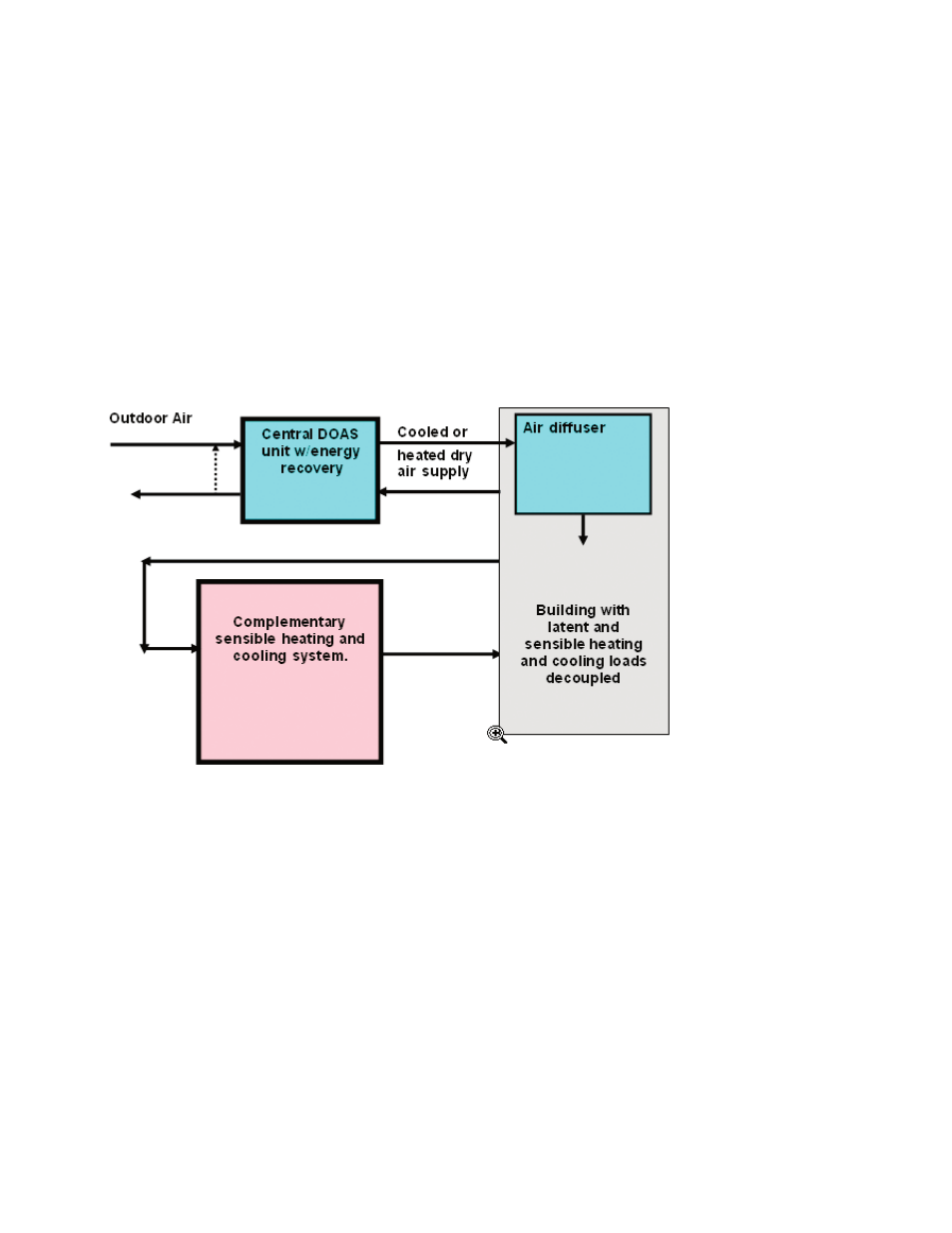Retrotec USACE User Manual
Page 159

Appendix D D29
HVAC system by an order of magnitude over the life of the HVAC system.
Changing dehumidifi cation/reheat system design strategy can reduce energy
consumption and cooling and reheat loads, improve IAQ, and reduce the po-
tential for mold growth in occupied spaces. These factors will reduce the level,
frequency, and expense of remediation that seems to occur on a regular basis.
Air supply systems that must provide both cooling and dehumidifi cation are
typically designed in a way that wastes chiller and boiler plant energy. Using
“standard” AHU design strategies that dehumidify the air and then reheat it to
reduce RH can waste 50% or more of the chiller plant and boiler plant energy
when compared to using AHU designs based on high-effi ciency dehumidi-
fi cation systems (HEDS) design strategies for dedicated outside air systems
(DOAS) or variable air volume (VAV) systems combined with a separate heat-
ing and cooling system (Figure D48).
Figure D48. DOAS with a complementary heating and cooling system..
D.2.2.9 Poor Selection of Cooling/Dehumidifi cation Coils
(Ineffi ciency)
Selection of cooling coils to improve system energy effi ciency and comfort con-
ditions is the easiest method to reduce operational problems and operational
expenses. Cooling coils with 8 rows of depth and 12 fi ns per 25.4 mm (12
fi ns per inch) allows dehumidifi cation to occur at much higher chilled water
temperatures than can occur with a 4-row or 6-row coil. Cooling coils with a
low face velocity in the 91.4–106.7 m/min (300–350 fpm) range reduce the
air pressure drop across the cooling coil and increase the chilled water system
temperature differential across the system.
